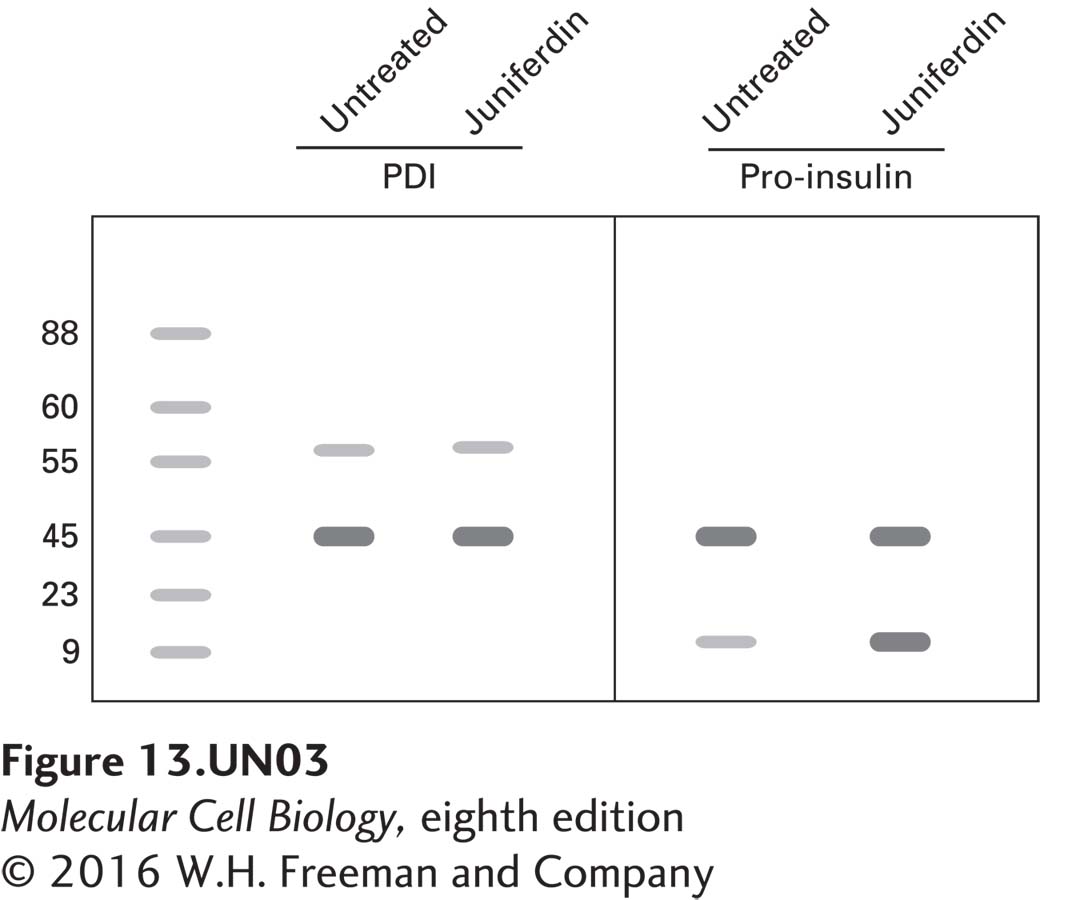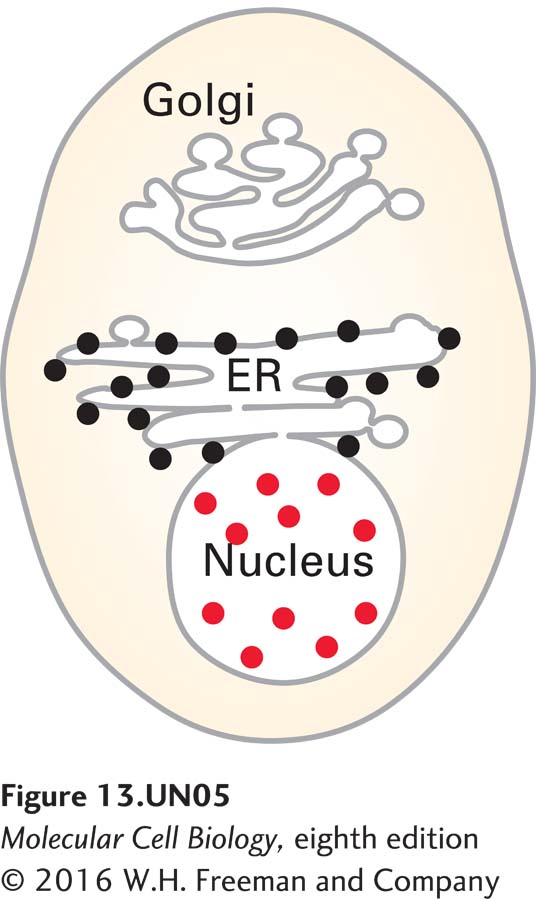Chapter 13. Juniferdin and PDI
Introduction

Analyze the Data 13-2: Juniferdin and PDI
Recently, researchers discovered that treating mammalian cells with juniferdin, a plant-derived compound, affects protein secretion, and they have reported that the target of this drug is protein disulfide isomerase (PDI). In the following experiment, cultured pancreatic β-cells were treated with juniferdin, and protein lysates were isolated and compared with lysates from untreated cells using immunoblot analysis. Probing of blots with antibodies against PDI (57 kDa), actin (43 kDa), and proinsulin (9.8 kDa) shows the following:

Question
NWvHLYCE69gu6b5ckhLFs53IyyZBcxGs1RsFtYV58NB7IZXGxnZNIQ7II4re7Nt62wIPHSPAgWjM6OcGwHYyy5r1Wd1FaqE/R6kvolxx4Xp1Hdc9bky0pu+Alamj2kac4RE40vVi6Vu26lXiFjdrgJxobIOo6HHo2sF9YEL235AygqdV6BOTJkdq24TY0WM7SXyznD7NJ47RMfqJJAVNvOpoKJEVMcKf5BbnsGulrlbN9U0F1s8rKIMCq49Rts3QlhuIr26sMnyDzOu4chrG6LpG/GjPbEgD8/b0BtK3FOm15CmYCudxGYo3d9hdvlYagrhAM13Pij1m0y1qhrLDu8Z1B/yMFfDecn2oEjyGwcwbk/37IP0UNmfow+G5ZP3LsajTTbIqTD9sUYiB2IMiBEdEFuxW+q8VQuestion
b. To confirm these results, protein lysates of juniferdintreated and untreated cells were separated by SDS-PAGE, blotted to membranes, and then probed with antibodies against Ire1 and Hac1.

Question
c. An immunocytochemistry and fluorescence microscopy analysis was undertaken with the antibody used in blot B and a secondary antibody labeled with rhodamine (red). Since juniferdin specifically affects PDI, a resident rough ER (RER) protein, how do you explain the localization of the signal in the nucleus?

Activity results are being submitted...